1988, workshop with Duane Michals at the Rencontres de la Photographie in Arles. Participating in this workshop had a lasting impact on me. For me it was THE photographic hint in the right direction!
Groundbreaking decisions
I had learned some things about photography autodidactically. On the job. The desire for more was there. Workshops with renowned photographers.
The encounter with Duane Michals, the master of photography, was groundbreaking for me.
Equally crucial were the perspective experiments, the "invention" of AURAMA.
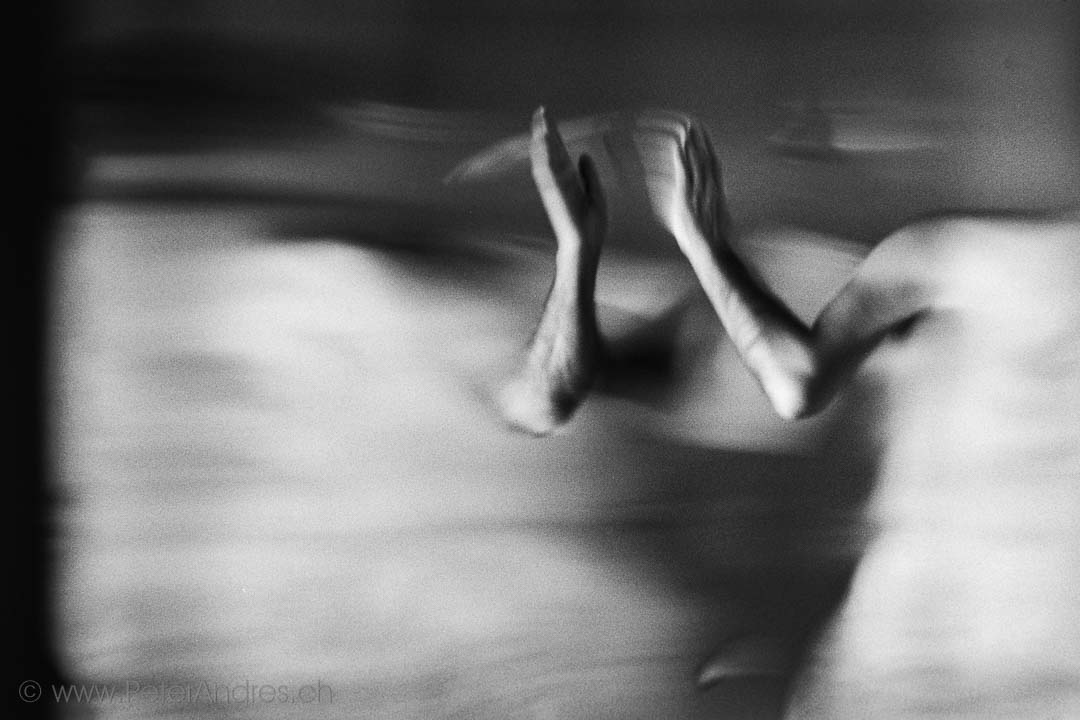
The chapters
 The decisive workshop
The decisive workshop
Rencontres de la Photographie in Arles
For me Duane Michals is one of the world's best photographers. He is the master philosopher among photographers. His work is of extremely high quality. I love his picture stories. They are subtle, are executed with great care and are designed with a lot of humor. There are many books in my library.
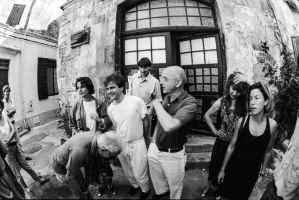
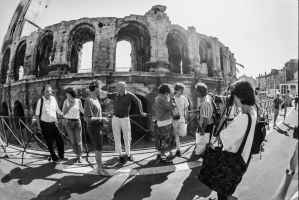

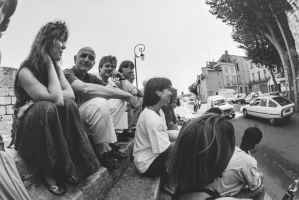
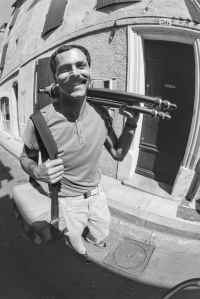
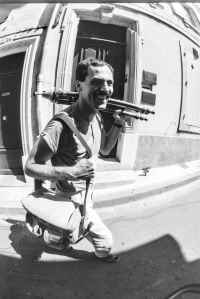
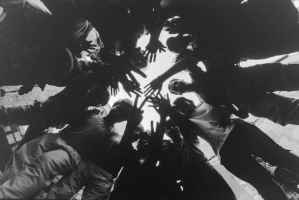
+++
Duane was always there. Of course, even in front of the camera!
An unusual gesture from a workshop master.
For us, this was excellent inspiration for our own projects.
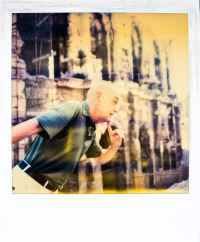
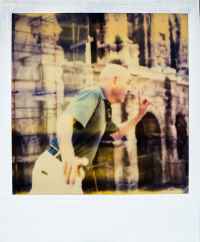
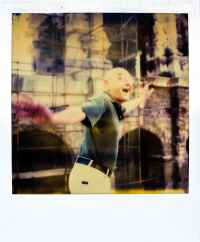
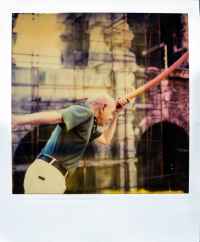
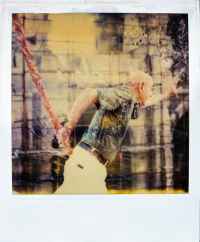
After-Works… It's almost evening, time for an aperitif, the workshop tasks are (possibly) completed, the film supply is threatening to run out. Full of enthusiasm, people meet on the Place du Forum under shady trees and discuss things over a glass of wine with and without the master. The topic is photography (how could it be otherwise). The discussions among photographers are not just verbal. Thanks to Pola!
More information about Duane Michals on Wikipedia:
► Duane Michals, USA
 AURAMA – perspective experiments
AURAMA – perspective experiments
Portraits ...
Freed from any "conventional" photographic guidelines, I began to experiment with a completely new perspective view. I called it AURAMA.
| LIFE | is | MOVING |
| SEEING | is | RECOGNIZING |
| RECOGNIZING | is | ACTING |
| ACTING | is | LIFE |
These are photographs of people, so that they can be seen from all sides at the same time. Hence AURAMA, the word combination of aura and panorama.
It is pure analog photography without any image processing, each image was created in a single shot, no double exposure. Just guide the camera manually and press the shutter... I also did not use any automated mechanical technology. This meant that with these concerns and recording options, only the most extreme alienation and motion blur could be created.
These are deliberately nude shots with one or two people. Apart from a few exceptions, clothes or accessories would have been disturbing elements.
Today this would be easier to do with Photoshop, video mix etc., but with far more technical effort.
Looking back, AURAMA is one of my most important conceptual works. Created in the early 1990s. By questioning the perspective way of thinking, the results had a very strong influence on my future perception of images.
Despite exhibitions in Bern and Berlin, the response was unfortunately small. The "reversal of perspective" is probably a bit too complex.
The decisive thing about this unusual series is not the images themselves. It is the reversal of the perspective that underlies them. Imagine you are in a group of people. You see the people in front of you. When you turn, you see others, almost like in a panorama. But how do these people see you? And not each one individually, but all the people together as a whole. How does the "panorama" see you? That is what underlies this series of images, what I wanted to strive for, my intended concept.
You can find a more detailed description ► here
It wasn't easy to implement my plan. There were no role models. Digital tools hadn't been invented yet. So I had to try things out... I made my first attempts with a Polaroid SX-70 because I could see the result straight away. But you couldn't really see anything in the pictures because triggering the camera and rotating the object was anything but easy. But I saw that I was on the right track.
Here are some remaining Ur-Aurama.
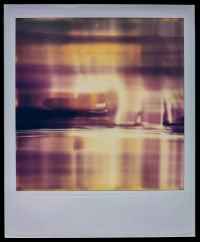

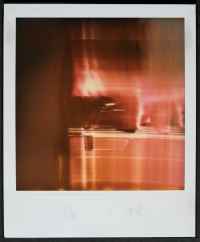
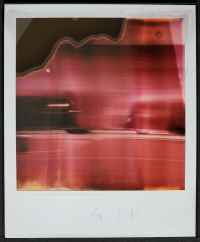
+++
With a real camera in the studio, the time had come.
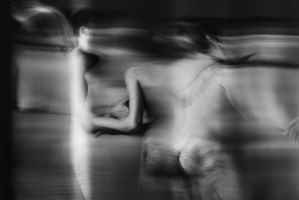
To Chapter 5: Urbex – Abandoned Places To Chapter 3: The way to the studio



